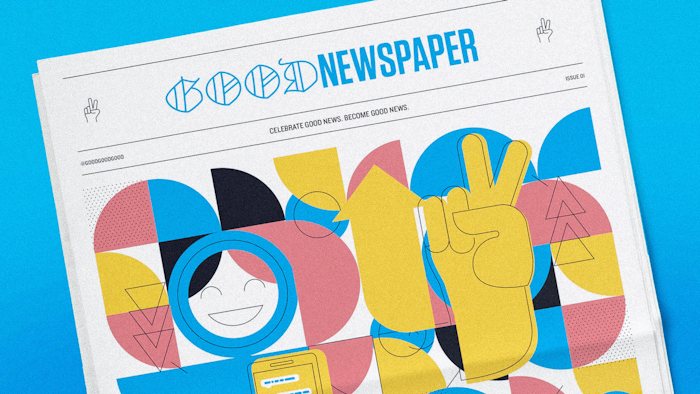How to Write a Press Release for Your Kickstarter Publishing Campaign
Publicity is a tricky thing. How do you get a reporter’s attention without being annoying? How do you encourage positive coverage in the press? Where do you even start?

A press release may seem old-fashioned, but it endures because it’s an efficient, cost-effective tool that can have an impact, especially when done in a thoughtful and creative way. The purpose of a press release is to distill everything about your project into a succinct, easily digestible format, allowing even the most harried, overworked journalist to see immediately why this idea is noteworthy.
Here are 10 evergreen tips to help you write a successful press release for your Kickstarter publishing campaign.
1) Answer the essential questions.
There’s a reason we learned the basic tenets of a story in grade school, and answering these questions will help you organize your thoughts and the flow of your press release. But remember: a press release should be short and sweet — almost never longer than a page — so be as concise as you can with your answers.
- Who created the project? Make sure to include credentials for all contributors, emphasizing prestigious awards and recent, high-profile credits.
- What is it? What type of project is it, and in what format? For example: “Deluxe omnibus edition” or “The first issue of a brand new series” will be far more enticing than “a comic book.”
- Where is it available? You’d be amazed by how many press releases for crowdfunding projects fail to include the platform where the campaign is happening, or even a link to the campaign. It’s best to include your Kickstarter URL twice: once in the first paragraph and again at the end of the release.
- When (and for how long) will the campaign be live?
- How is it newsworthy and of interest to your audience?
2) Use your words carefully.
Compelling details can help a press release stand out from the pack. But with very few exceptions, the plot ofyour story itselfis not newsworthy. This means you should not spend 1,000 words on every nuance of your book’s plot. It’s important to establish your project’s high concept and its genre, but for the purposes of the press release, the story behind the story is likely to be more compelling than the plot itself. How long have you been working on the project? What inspired you? Does your project center specific social groups or themes? Is the format of the book unusual?
Here are a few more tips about choosing the words you’ll use:
- Try to channel the creativity and charm of the project into the language of the press release.
- Write for a general audience: don’t assume that the journalists (or their readers) know every detail of comic book history or everything there is to know about the themes you’re working with.
- Include your contact information, or the contact information of whoever will respond to press queries.
- Include your own and all your contributors’ social handles.
- Use the active voice.
- Above all else: be clear.
Like the best creative works, you’ll want to cut any and all superfluous words. Once you have established what your project is about in a short and compelling way, you’ve done your job.
3) Don't lie, exaggerate, or over-promise.
Avoid superlatives or puffery in your descriptions, like “world’s first/greatest/best,” etc. Be honest and authentic about your project. If a press release makes claims it can’t back up, it won’t be taken seriously and journalists will not write about it. ‘Nuff said.
4) Give your audience what they want!
Who is your audience? Caution: this is a bit of a trick question.
When you’re writing your Kickstarter campaign copy, your audience is all your potential backers. But when writing a press release? You need to have an entirely different audience in mind: the journalists and bloggers who cover these campaigns.
To that end, make sure your release includes:
- Your book’s specs: number of pages, trim size, binding type, expected release date
- Promotional art, either attached or included in a linked folder from Google Drive, Dropbox, or WeTransfer
5) BREAKING NEWS: Something Is newsworthy because it’s new
As a creator, editor, or publisher, you are obviously very close to the project you’re promoting. Your excitement about it can be contagious (in a good way!), but you’ll be able to communicate that better if you take some time to consider the project from someone else’s point of view.
Before you begin drafting your press release, start by making a list of 20 reasons why your project is newsworthy.
Wait — did your head just explode?
Okay, there are probably not 20 reasons your project is newsworthy. But that’s okay! It may seem like there are only one or two reasons, but try to push yourself to come up with 20. This is largely an exercise to help you stop thinking like a creator or publisher and start thinking like a journalist or a blogger.
Here are some questions to consider: Does this project feature all new material? Does it have a contribution from a noteworthy person? Is it particularly timely or relevant to a current event? Does it have an intro, afterword, or endorsement by a prominent creator? Has the book or any of its contributors been nominated for an award? Is its release timed to a meaningful anniversary or event? Is your project autobiographical? Is it genre fiction? Are there unique or unusual reward tiers? These are the kinds of details that will make your release really strong.
Whatever you do, remember to focus on what’s new.
6) Don’t Write in the First Person
There are many smaller digital outlets that will publish an entire press release as is — but only if they can copy and paste it verbatim, or at least crib from it liberally. Keeping that in mind, avoid writing in the first person.
Describe your project as if it were written by an omniscient, impartial narrator. If there’s a sentence or two that you want directly attributed to you, add it to the release as a (short and compelling) quote, with clear attribution.
7) Your audience is busy and easily distracted, so avoid repeating yourself.
Your audience is busy and easily distracted, so avoid repeating yourself...unless it’s for dramatic effect.
8) There’s no substitute for a good headline.
The job of a headline is to get someone to read the subsequent story, and a press release is no different.
An effective press release headline is memorable, concise, and puts the focus on the most newsworthy element of the project. This could be the author’s credentials, a timely theme, or anything else from your list of 20 newsworthy things.
Write the headline you would want to see in the outlet you are pitching. Here are some successful ( generic) examples:
BREAKING NEWS:
Bestselling Author NAME Launches First Kickstarter for All New Novel, TITLE
Just in Time for Halloween: Horror Writer Launches Comic Book Series TITLE
FOR IMMEDIATE RELEASE:
Timed to Black History Month, Cartoonist Launches Comic TITLE on Kickstarter
Announcing TITLE, a Two-Volume Series About INSERT TIMELY SUBJECT HERE
Whatever you do, please avoid this absolutely uninspiring headline:
NAME Launches TITLE
9) Don’t include your cat in your biography unless he is your co-writer.
You might have noticed that sometimes famous people mention their pets in their bios. That’s fun! Almost everyone loves cats and dogs! Also: please don’t do this.
Keep your bio short, sweet, and informative. Your pets already know that they are loved.
10) Publicity Is Just Like Comedy
What does publicity have in common with comedy?
It’s all about the timing.
A successful promotional campaign takes weeks to plan. Make sure that you are mindful of timing when it comes to contacting the press.
Your campaign is most interesting when it’s still new, so make sure to send your press release to a few key contacts at least a week before you launch, so they have time to consider your project and, possibly, send interview questions your way. Send it out widely to everyone else either a few days before you go live or on your launch day.
Bonus tip: Stick to the day job (if you can)
Does this all seem like quite a lot of time-consuming work? That’s because it is! And that’s why there are people who are paid to do it all day long.
Not every Kickstarter campaign requires the help of a professional publicist, but if you have the means to hire one, doing so can be a very good choice. It will free up your time and energy to focus on your creative work and promoting to your own audience, while adding a layer of professionalism to your team.
Big Picture
Needless to say, crafting a pitch-perfect press release is just one piece in the creation of a dynamic promotional campaign, but it’s a very important one. Follow the above steps and you’ll be on your way to getting great coverage! And when the stories start to run, don’t forget to share them on social media (and tag the writer to say thanks)!
David Hyde is the founder of Superfan Promotions, a boutique agency that creates publicity and marketing campaigns, events, and social media engagement for artists, authors, conventions, festivals, entertainment companies and publishers.
For further reading, check out these articles from the Creative Independent: “How to Get Press for Your Creative Work” by Kickstarter’s head of comms Kate Bernyk, and “A Creative Person’s Guide to Thoughtful Promotion” by visual artist Kathryn Jaller
